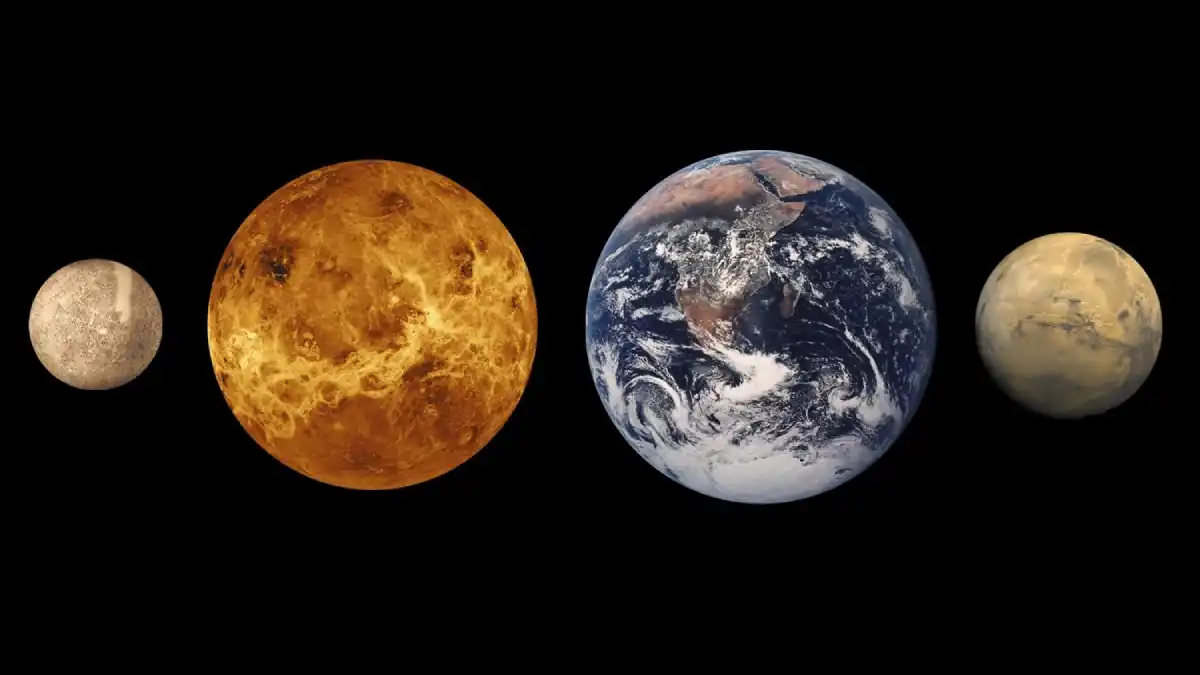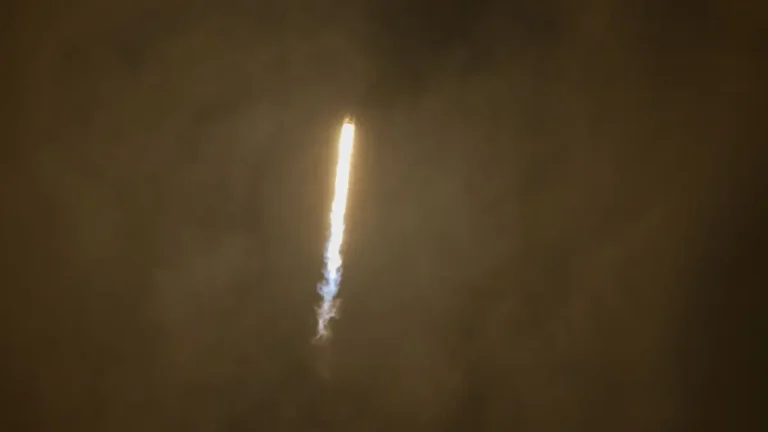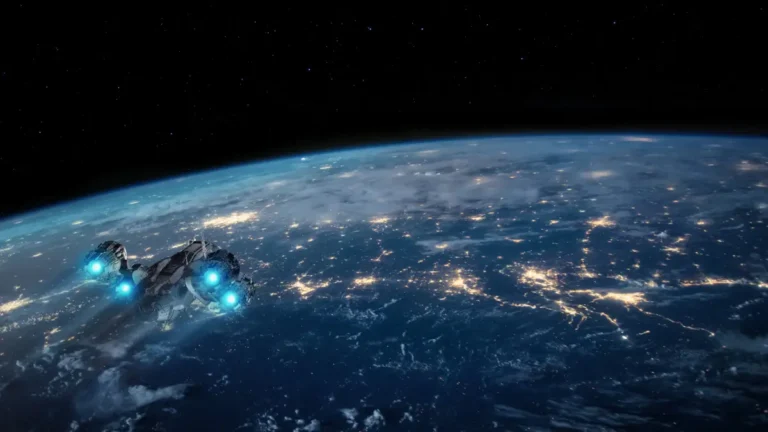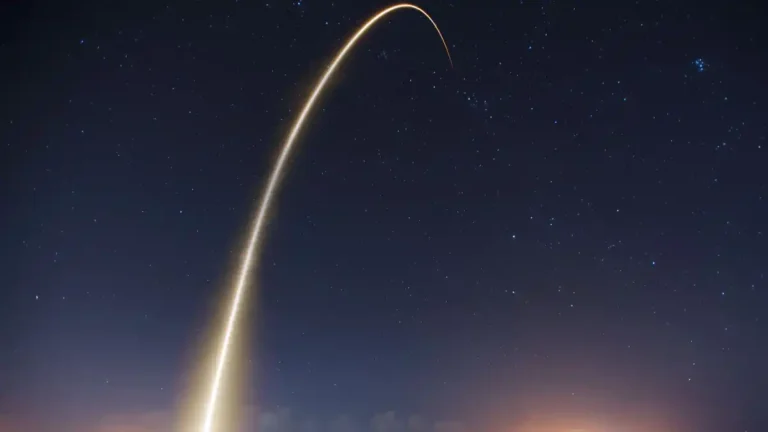Why the fuel of cow farts might power our starships, and why Venus—not Mars—could become the unlikely engine of human expansion.
Thanks for all the feedback I’ve received on this little space series so far. It seems my half-baked musings managed to stir up some questions, and one in particular loomed large enough to blot out the stars:
“Where the hell would we get enough methane in space, and economically so?”
Ah yes, methane—the gas of choice for both cow pastures and rocket engines. The fuel that bridges the gap between flatulence and interplanetary conquest. But before we start drilling Titan for its planetary reserves of cosmic natural gas like the galactic version of ExxonMobil, we have to step back and ask the fundamental question:
What exactly do we want to do in space?
This isn’t a trivial query, because the answer dictates the resources we’ll need, where we’ll need them, and how insane the whole endeavor will inevitably become. And when you scrape away the PR gloss and the nerdy PowerPoint decks, there are really only two core philosophies at play, each with wildly different requirements and wildly different flavors of madness.
Musk: Terraforming or Bust
On one extreme end, we have Elon Musk—the techno-Prometheus with a Twitter addiction—who believes humanity should not just visit other planets, but squat on them permanently. Build domes. Grow potatoes in our own feces. Eventually terraform the entire place until Mars looks like the Arizona desert with worse real estate prices.
This post first appeared in 2020, back when I still entertained hope that rational arguments might sway public sentiment. I’ve since remastered it—sharpened the edges, clarified the threat, and realigned it with the Grimwright ethos: use what works, discard the rest, and always—always—question the narrative. The date remains unchanged as a historical marker. The content does not.
This vision, of course, aligns perfectly with the costume-drama space operas we’ve been spoon-fed since childhood. Star Trek, Star Wars, and every other cheap paperback in the dusty corner of your uncle’s attic promised us worlds that were basically Earth with different wallpaper. Sure, the sky might be purple instead of blue, and maybe gravity makes your hair curl the wrong way, but by and large, you could walk outside without immediately melting or exploding.
The truth, unfortunately, is less cinematic. The Moon, Mars, and most other heavenly rocks within the inner solar system are spectacularly poor in the things humans actually need to live. Volatiles—our bread and butter gases. Oxygen, nitrogen, hydrogen, carbon dioxide. On Earth, we inhale them without thinking. Out there, they’re like fine Scotch: expensive, rare, and locked away in stubborn geology.
Yes, you can synthesize them. Strip oxygen and hydrogen out of rocks. Extract carbon from CO₂. Play alchemist with whatever scraps you find. But the price is steep: energy. And while energy near the Sun is cheap and cheerful—solar panels basking in glorious unfiltered radiation—move farther out and suddenly you’re huddling around a nuclear reactor just to keep your space toilet from freezing.
Even Musk, for all his swagger, cannot bend the laws of physics. He might tweet about nuking Mars to jump-start a greenhouse effect, but it’s more likely we’d spend centuries pumping gases out of rocks with the enthusiasm of medieval peasants scraping moss from castle walls.
Bezos: Forget Rocks, Build Palaces
On the opposite end of the cosmic spectrum sits Jeff Bezos. He doesn’t dream of making a home on dusty red deserts or sulfuric wastelands. No, his vision is cleaner, colder, and—in some ways—far more compelling.
Bezos wants us to live in free space itself. Giant spinning cylinders—O’Neill cylinders, named after the physicist who first sketched them in the 1970s—floating serenely between Earth and the asteroid belt. Imagine the drum of a washing machine the size of Manhattan, spinning just fast enough to fake gravity through centrifugal force. Humanity’s laundry, tumbling through the void.
And unlike Musk, Bezos doesn’t want to bend hostile environments into something livable. He wants to fashion habitats to suit us. Adjustable gravity. Perfectly calibrated oxygen levels. Daylight cycles set to your personal preference—Mediterranean golden hour forever, if you like. Try doing that on Mars, where even the most optimistic scenario involves everyone wheezing into oxygen masks like asthmatic divers.
Of course, even Bezos’s steel palaces in the sky have their headaches: radiation shielding, micrometeorite protection, the occasional solar flare trying to fry your artificial paradise. But unlike terraforming an entire planet, these are problems with known, tangible engineering solutions. Pile on enough rock, water, or metal, and radiation is tamed. The cylinder keeps spinning, the gardens inside stay lush, and your kids can grow up in a controlled Eden with WiFi.
If Musk’s vision is pioneer romance—grizzled frontiersmen carving life out of rock—Bezos’s is baroque bureaucracy: a floating suburb where conditions are perfectly regulated, and homeowners’ associations probably extend to orbital mechanics.
The Playground Problem
Whichever vision appeals to your imagination, both share a common limitation: distance.
For the foreseeable future, humanity will be stuck in the inner solar system. Not because we lack ambition, but because physics is cruel and logistics is crueler.
Consider this: it takes about two days to fly around Earth in a commercial jet. By that same standard, flying to Mars would take 3,000 days. Nearly nine years. Rockets are faster, of course, but you get the point. The scales are brutal.
And yet, this same vastness hides a strange paradox. The Earth–Moon system alone contains enough orbital real estate to house millions of O’Neill cylinders without them ever bumping into each other. The entire inner solar system could support quadrillions of humans, living in comfort unimaginable today. Space is both impossibly distant and unimaginably spacious. Humanity’s problem isn’t running out of room—it’s dragging enough fuel, food, and sanity into the void to get there in the first place.
Which brings us back to methane.
Titan: The Galactic Gas Station We Can’t Reach
If methane truly becomes the backbone of rocket propulsion—and it’s looking increasingly likely, given its chemistry, efficiency, and storage properties—then we’ll need more than a few paltry deposits hidden in Martian rocks.
Enter Titan, Saturn’s largest moon. It’s a cosmic fever dream: rivers of liquid methane, lakes of natural gas, entire oceans of rocket fuel just lying around, begging to be siphoned off. When the Huygens probe descended through Titan’s orange haze, it was like landing in an alien Texas, the ground soaked in liquefied hydrocarbons.
The problem? Titan is far. Not “annoying layover” far. Decade-long-voyage far. A round trip could take longer than most political careers or marriages. You don’t build a spacefaring civilization around a fuel depot that takes ten years to reach. Not unless you want your interplanetary empire to run slower than the postal service of 18th-century Prussia.
Venus: From Heaven to Hell
Here’s the twist most people forget: the very first planet humanity ever visited with a machine was not Mars. It was Venus.
Venus is tantalizingly close, with frequent launch windows and relatively low energy costs to reach. For much of human history, we even imagined it as Earth’s twin. A balmy paradise, shimmering under thick clouds. The Romans named it after the goddess of love, beauty, and desire—surely a world fit for utopia.
Then came the Soviet probes. Venera 7 in 1970 managed to land, and in the process shattered humanity’s illusions in record time. Instead of paradise, Venus turned out to be hell. A surface hotter than a pizza oven. Atmospheric pressure equal to being a kilometer underwater. Rain made of sulfuric acid. Probes died within minutes, crushed and fried like unlucky deep-sea divers.
To this day, Venus remains the most hostile surface we’ve ever examined—absolutely sterile, utterly unforgiving, a planetary torture chamber. Step outside there and you’d be cooked, crushed, and dissolved before you had time to regret your life choices.
Venus Reconsidered: The Garden Above the Inferno
And yet—ironically—it might be Venus, not Mars, that gives us our best shot at building a true spacefaring civilization.
Because Musk and Bezos’s visions both require two things above all:
- Stuff—the raw materials to build ships, stations, habitats.
- Energy—to power it all.
Dragging either of those out of Earth’s gravity well is ruinously expensive. Even with cheap rockets, lifting billions of tons into orbit is like trying to drain the ocean with a teacup.
Venus, however, has both in abundance. Not on its surface—that’s a death trap—but in its atmosphere.
The air of Venus is 96.5% CO₂ and about 3% nitrogen. That may sound unimpressive until you remember its atmosphere is 90 times denser than Earth’s. In terms of volume, that 3% nitrogen is equivalent to the 78% we breathe on Earth. In other words, Venus’s atmosphere contains more than enough nitrogen to build breathable environments, fertilizer, and anything else we need.
Add to that the sheer solar power available so close to the Sun, and you have a near-limitless energy source. Floating at an altitude of about 100 kilometers, massive blimps or platforms could harvest sunlight, extract gases, and process materials—all while avoiding the hellscape below.
At that height, conditions are almost Earthlike: pressure close to 1 atmosphere, temperatures survivable with minimal shielding. You could walk around in a reinforced airship without instantly turning into soup. Populations might live in orbital stations above, while industry churns away inside atmospheric platforms tethered together. Launching cargo from there into orbit would be far easier than lifting it from Earth’s gravity pit.
Suddenly, Venus doesn’t look like a cosmic wasteland—it looks like a gold mine in the sky.
The Verdict
So where do we get methane for our starships? Not from Titan—that’s too far. Not from Mars—that’s too poor. The Moon offers scraps, Earth’s reserves are finite, and Titan’s bounty lies decades away.
The smarter play may be closer: use Venus not as a colony in the romantic sense, but as an industrial engine. Mine its atmosphere for nitrogen and carbon. Use its endless solar energy to power chemical plants. From CO₂ and hydrogen (sourced from asteroids or Earth shipments), methane can be synthesized in industrial quantities.
It’s not as sexy as conquering Mars or as glossy as Bezos’s orbital condos, but it’s practical. And practicality, in space, is the only thing that keeps you alive.
Space colonization won’t look like Star Trek. It won’t even look like The Expanse. It’ll look like floating refineries, tethered blimps, orbital factories, and endless negotiations over who gets to pump Venus’s clouds into methane factories.
And maybe that’s the sobering truth: if humanity does carve a future in space, it won’t be with swashbuckling romance or utopian fantasy. It’ll be with the cold efficiency of industrial engineering, the bureaucratic grit of logistics, and the stubborn refusal to die in a universe that does not care if we live.




